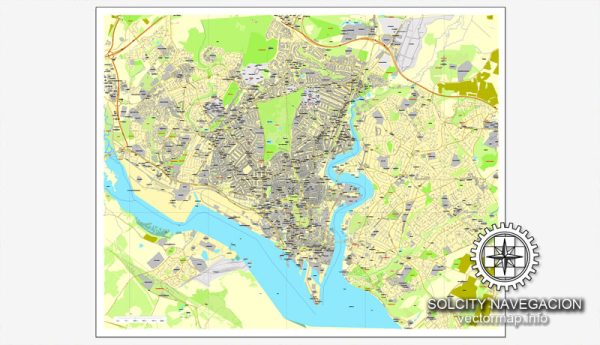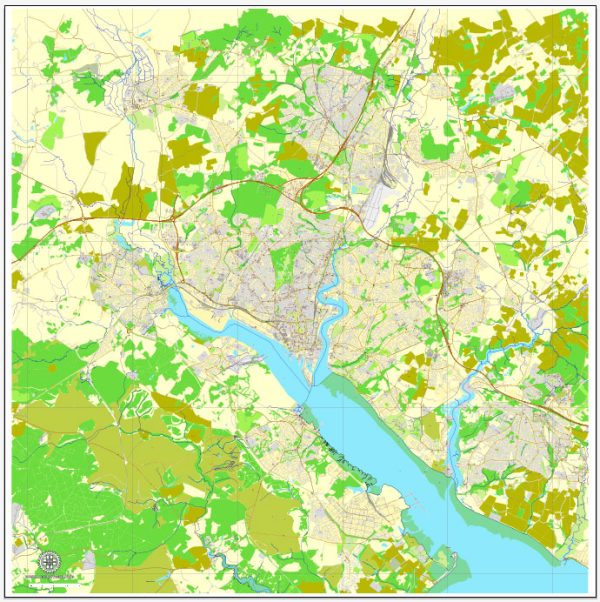The history of urban development in Southampton, UK, is rich and spans many centuries. Here is a brief overview of key periods and developments:
- Medieval Period (c. 7th – 15th century): Southampton has ancient origins dating back to the Roman period, but it flourished as a port town in the medieval era. The town walls were constructed in the 14th century, and remnants of these walls can still be seen in parts of the city. The medieval layout of the town featured narrow streets and buildings made of timber and thatch.
- Tudor and Stuart Periods (16th – 17th century): Southampton’s significance as a port continued to grow during the Tudor and Stuart periods. The city played a role in maritime activities, including the departure of the Mayflower in 1620. The town expanded, and the timber-framed buildings gave way to more substantial structures made of brick and stone.
- 18th Century: Southampton’s importance as a trading port continued to increase during the 18th century. The town saw the development of Georgian architecture, with elegant townhouses and public buildings constructed during this period. The Bargate, a medieval gatehouse, was renovated in the mid-18th century and remains a prominent landmark.
- 19th Century: The Industrial Revolution had a significant impact on Southampton’s urban development. The port facilities were expanded, and the railway arrived in 1840, connecting Southampton to London. This facilitated the transportation of goods and people, further boosting the city’s economic growth. Victorian architecture is prevalent in many parts of the city.
- 20th Century: Southampton suffered considerable damage during World War II due to bombing raids. The post-war period saw extensive reconstruction efforts, with the city evolving into a major commercial and industrial center. The construction of the WestQuay shopping center in the late 20th century marked a shift towards modern urban development.
- Contemporary Period: Southampton has continued to modernize and adapt to changing economic and social trends. The waterfront area has been redeveloped, with new commercial and residential spaces. The city has also invested in cultural amenities, such as the SeaCity Museum and the Mayflower Theatre, contributing to the overall vibrancy of the urban environment.
- Port Expansion and Infrastructure Development: The port remains a crucial aspect of Southampton’s identity, and ongoing developments in container handling and cruise ship facilities have shaped the city’s urban landscape. Infrastructure projects, including road networks and public transportation, have been implemented to support the growing demands of the city.
Throughout its history, Southampton’s urban development has been closely tied to its maritime activities, and the city continues to evolve as a dynamic and thriving urban center.



 Author: Kirill Shrayber, Ph.D.
Author: Kirill Shrayber, Ph.D.